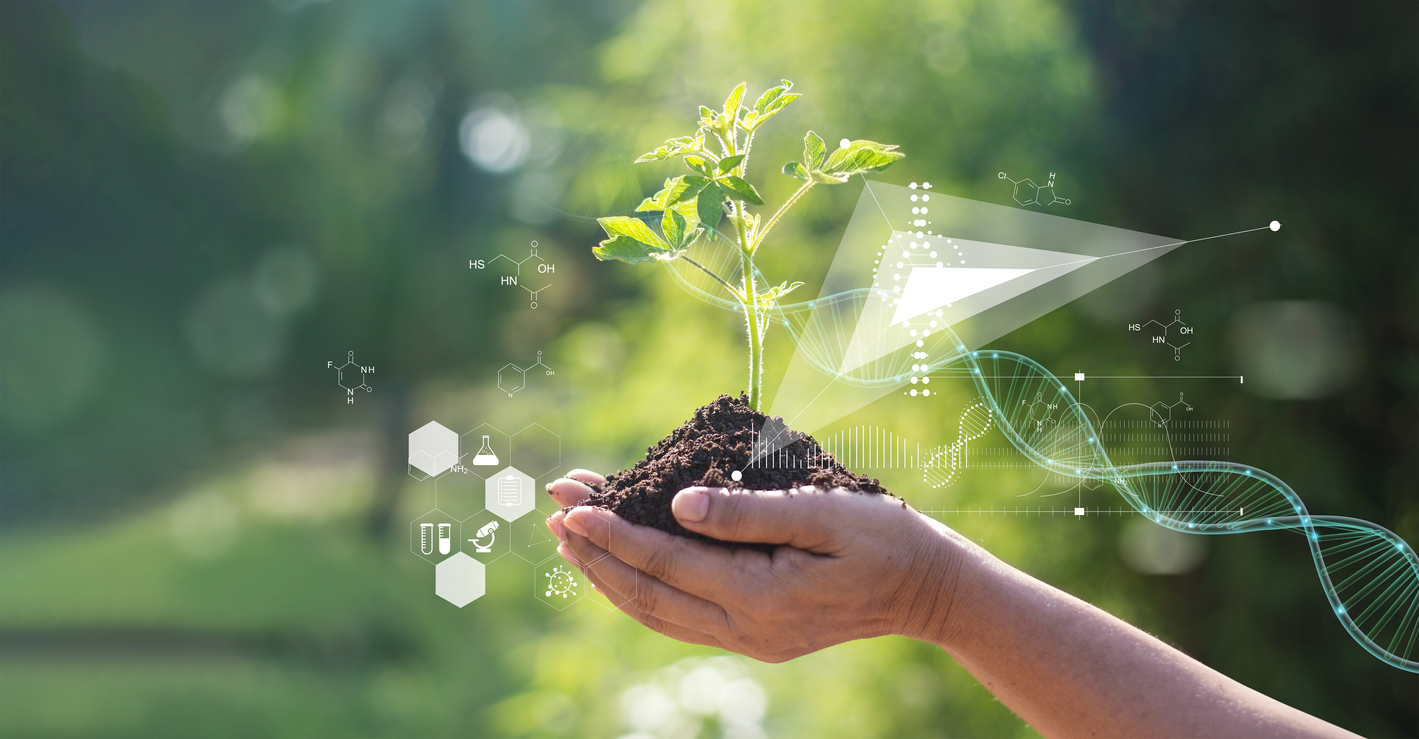Using Electricity to Assess Soil Health
A new break-through in soil health testing has occurred which may allow researchers and farmers to instantly measure soil health and microbial activity. A group of Washington State University researchers are using small electrical currents to assess soil microbes and soil health impacts. Soil microbes process 90% of the soil’s energy and nutrients. Each microbe is like a soluble bag of fertilizer, supplying plant roots with nutrients, amino acids, proteins, and even whole enzymes.
Measuring soil health has been difficult. Soil scientist, fertility specialist, and farmers have used soil chemistry and harsh chemicals to make nutrient analysis. They also measure soil texture and pH to try to understand a soil’s chemical and physical properties. While chemical and physical measurements may be valuable, they do not always measure soil productivity directly. Soil biology is extremely important as well. Unfortunately, there has not been many good tests to measure both biological activity and soil productivity together.
Soil productivity is closely related to how microbes function in the soil. Their may be close to 50 billion bacteria and 100 million fungi in a handful of soil. These microbes and other soil organisms process soil nutrients to either tie up (immobilize) or process them into a form that is plant available (mobilized nutrients). Plants send hormonal signals to microbes to transform plant unavailable nutrients into plants available forms. In healthy soils, microbes can protect a plant from pathogens by out competing or providing antibodies. Healthy microbes also promote plant growth stimulating hormones for improved plant growth and yield. Until recently; there has not been a simple, easy to use way to instantly measure microbial activity.
The Washington University team of researchers solved this problem by using an aquatic probe to measure the electrochemical signature of existing soil microbes. In an ideal soil, 50% of the soil is pore space. About 50% of the that pore space or 25% of the entire soil volume maybe filled with water. Most soil microbes live and travel in the water filled soil voids. All biological beings have an electrical signature, so researchers developed a way to measure this electrical signature. Soils that are healthy and teaming with microbes have a higher electrical signature than soils that are poor structured, compacted, have low microbial populations or are unhealthy. A soil probe with real-time measurements could lead to instant simple soil tests which a farmer could use to determine the productivity of their soils.
The probe the researchers developed measures the electrochemical signature of microbes. Microbes process nutrients by freeing up electrons and using those electrons for energy, similar to way animals and humans eat and breathe. The microbes give those electrons to a donor acceptor molecule like oxygen. The team of researchers developed a simple probe to replace the acceptor molecule. Using this electrode, they can measure the electrical current and start to quantify the microbial soil activity. So really, researchers are measuring how soil microbes breathe. They identified soils that were quite similar in soil chemistry and physical properties (same pH and soil type), but one soil was much more productive. They found that the unproductive soil had only 1% of the electrical current associated with healthy microbes and productive healthy soils. When researchers added sugar to both soils to stimulate microbial activity, they observed a significant change or increase in the electrical current of both soils.
Most of the world’s soils are becoming degraded and losing their natural productivity. Good healthy soils are the basis for all animal and human nutrition. Currently, a major problem is that even the act of soil sampling changes the soil tests and most soil tests are still taken to the laboratory for analysis. To improve soils quickly, researchers and farmers need a rapid soil test that measures a soil productivity instantly so that management changes can be made quickly. This new electrical sensor probe can measure and evaluate soil structure and how the soil is functioning, including measuring healthy and unhealthy microbial activity. This allows the researchers and eventually farmers to make instant changes to improve soil productivity.
Researchers are currently refining their methods and testing more soils types and farm fields to get more data to analyze to make future farm management recommendations. Real-time measurements can improve not only soil health but also improve nutrient density in our grains, vegetables, the meat we eat and humans if high density food is consumed. Developed from Washington State University materials and an article written by Tina Hilding.
